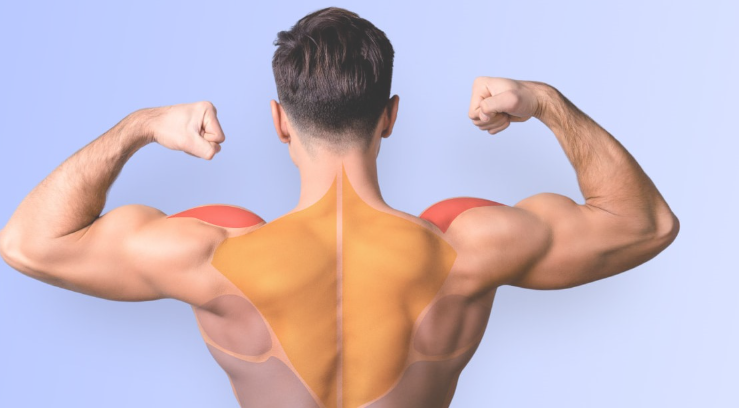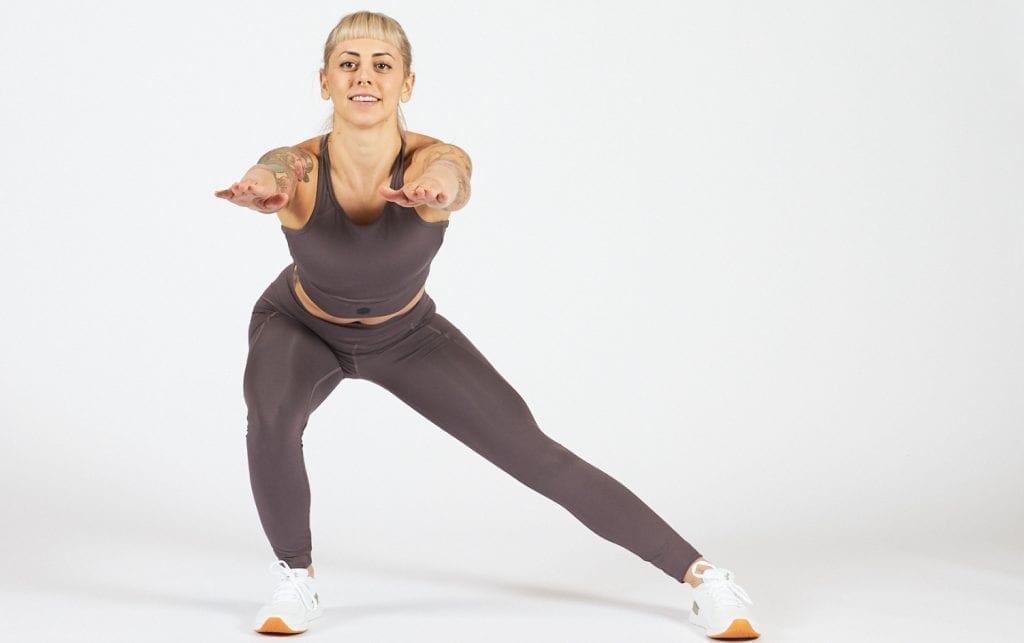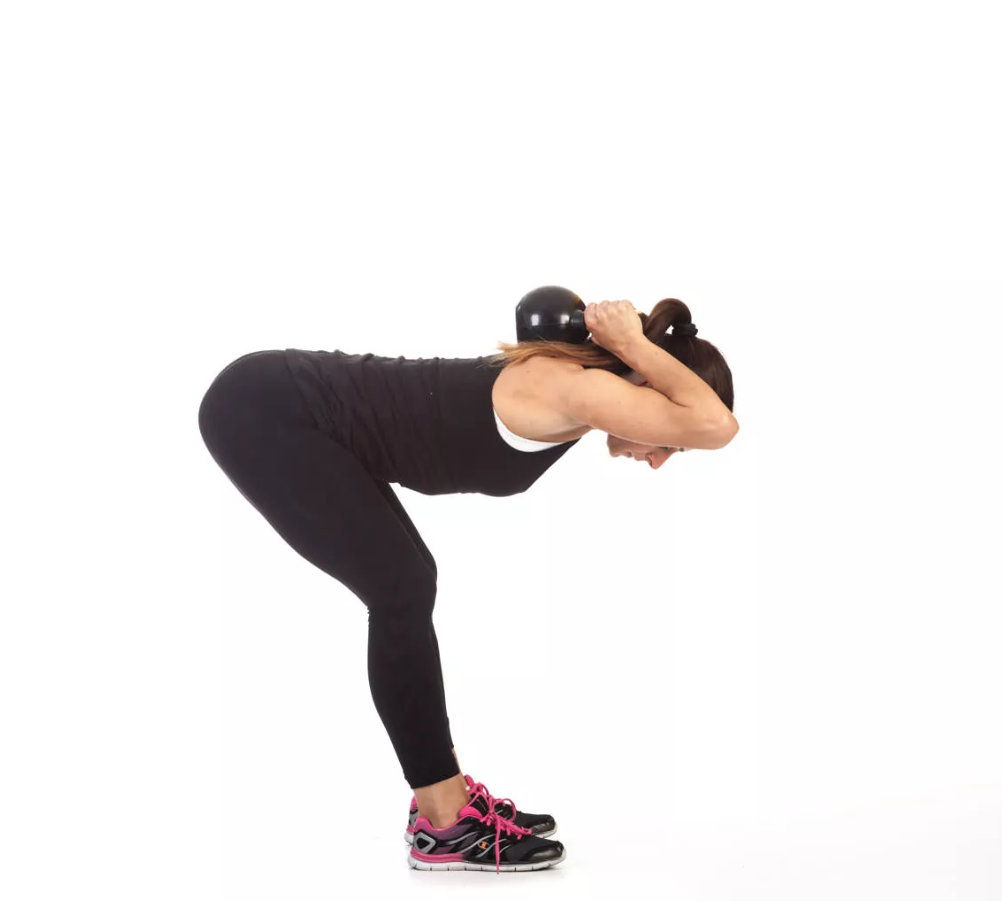Are you tired of dealing with stiff, creaky shoulder joints every day? You're not alone. Many people suffer from shoulder pain and stiffness, but the good news is that there are simple solutions to help alleviate these issues and improve your shoulder mobility. By addressing shoulder mobility issues, you not only reduce pain and discomfort but also enhance your overall quality of life and maintain independence as you age.
Improving shoulder mobility can contribute to better posture, reduced risk of injury, and enhanced performance in physical activities. With a deeper understanding of shoulder anatomy and the benefits of mobility, coupled with exercises tailored to your needs, you can take proactive steps towards reclaiming pain-free movement and enjoying a more active lifestyle. Let's delve into the anatomy and function of the shoulder, understand why shoulder mobility is crucial for your overall health, and explore some effective exercises to enhance your shoulder mobility.
Understanding Mobility
First, let's clarify what mobility means. Mobility refers to the ability to move your body without limitations or pain. It involves having healthy joints with optimal range of motion. Your joints can move to a certain degree before being restricted by surrounding muscles, tendons, and ligaments.
Understanding mobility encompasses recognizing the intricate interplay between flexibility, stability, and strength within the body. While flexibility allows for joint movement through a full range of motion, stability ensures control and support during movement, and strength provides the power to execute those movements effectively. Achieving optimal mobility requires a balance of these elements, cultivated through targeted exercises, mindful movement patterns, and regular physical activity. By nurturing mobility, individuals can enhance performance, reduce the risk of injury, and foster longevity in their physical well-being, ultimately enabling them to lead more active and fulfilling lives.
Mobility is closely tied to posture and influences various activities, especially those that involve carrying loads. Proper mobility ensures that your joints and surrounding tissues can handle the demands of movement effectively. It's essential for building efficient muscles and preventing injuries.
The Importance of Shoulder Mobility
Why is shoulder mobility so crucial? Having the ability to move your shoulders freely without pain or limitations is essential for maintaining a high quality of life. Limited shoulder mobility can increase the risk of shoulder injuries and impact your ability to perform daily tasks comfortably. The shoulder is a complex joint with various muscles and connective tissues working together to facilitate movement. Proper mobility within the shoulder joint and its surrounding tissues is vital for preventing injuries and maintaining functional shoulders.
Optimal shoulder mobility contributes to overall upper body function and posture, as well as enhances performance in sports and recreational activities. Whether you're reaching overhead to grab an item from a shelf, lifting weights at the gym, or swinging a golf club on the course, unrestricted shoulder mobility is key for executing movements efficiently and safely. By prioritizing shoulder mobility through targeted exercises and mindful movement practices, individuals can minimize discomfort, improve functionality, and enjoy greater freedom of movement in their daily lives.
Causes of Poor Shoulder Mobility and Pain
Several factors can contribute to poor shoulder mobility and pain:
- Weakness in the surrounding muscles, such as the trapezius, serratus anterior, and rotator cuff muscles, can lead to compensations and tension in the upper back and neck.
- Trauma to the shoulder, such as a rotator cuff tear or dislocation, can result in limited shoulder mobility if not properly treated and rehabilitated.
- Muscle tightness, particularly in the pectoralis minor and latissimus dorsi, can restrict shoulder movement.
- Improper exercise form, which limits the shoulder's ability to move through its full range of motion.
Shoulder Mobility Tests
Before diving into exercises, it's essential to assess your current shoulder mobility. Two common tests for tight shoulders are:
- Overhead Shoulder Mobility Test, This test evaluates your ability to reach overhead and assesses any discrepancies in mobility between your right and left sides. This assessment evaluates your capability to reach overhead, mimicking movements such as reaching for objects on high shelves or performing overhead lifts. During this test, you'll raise your arms overhead while keeping them straight and observe if there are any differences in mobility between your right and left sides. Discrepancies may indicate areas of tightness or imbalance that need attention during your mobility routine.
- Apley's Scratch Test, This test measures shoulder range of motion and identifies any areas of tightness or pain in the rotator cuff muscles. To perform this test, you'll reach one arm behind your back and attempt to touch or reach as high as possible up the spine. Then, with the other arm, reach over the shoulder and down the back, trying to touch or overlap your fingers. Any difficulty or discomfort in performing these movements can indicate tightness or restrictions in the shoulder joints and muscles.
These tests serve as valuable tools for understanding your current shoulder mobility status. If you encounter limitations or discomfort during the assessments, incorporating targeted mobility exercises into your routine can help address these issues. By regularly performing exercises designed to improve shoulder mobility, you can enhance flexibility, reduce stiffness, and minimize the risk of injury during daily activities or sports participation. Remember to consult with a healthcare professional or a certified fitness trainer before starting any new exercise program, especially if you have pre-existing shoulder issues or injuries.
The Best Shoulder Mobility Exercises
If you're looking to improve your shoulder mobility, try incorporating the following exercises into your routine:
Scapula Protraction & Retraction

How to do it
- Start in a quadruped position with your hands directly under your shoulders and your knees under your hips.
- Begin by protracting your shoulders, pushing your hands into the ground, and allowing your shoulder blades to separate.
- Then, retract your shoulders by pulling your shoulder blades back and together without shrugging your shoulders.
- Engages the muscles of your upper back and shoulders.
- Helps improve posture by strengthening the muscles responsible for retracting the shoulder blades.
- Enhances shoulder stability and mobility by promoting proper movement of the scapulae.
Scapula Circles
Perform smooth circles with your shoulder blades to improve neuromuscular control and prepare for exercises like push-ups and pull-ups.- Assume a seated position with your arms extended in front of you.
- Create smooth circles with your shoulder blades by sequentially elevating, protracting, depressing, and retracting them.
- Perform the movement in both forward and backward directions to target different muscle groups.
- Improves neuromuscular control by coordinating movement of the shoulder blades.
- Prepares the shoulders for more complex exercises like push-ups and pull-ups by activating the surrounding muscles.
- Helps prevent shoulder injuries by promoting proper scapular movement patterns.
Half Kneeling T-Spine and Shoulder Rotation
Rotate your thoracic spine and shoulders in a half kneeling position to stretch and strengthen the muscles surrounding the shoulders.- Begin in a half kneeling position with one knee on the ground and the other foot flat on the floor in front of you.
- Extend your arms out in front of you at shoulder height.
- Rotate your thoracic spine and shoulders to one side while maintaining a stable lower body position.
- Stretches and strengthens the muscles surrounding the shoulders and upper back.
- Enhances thoracic spine mobility, which is essential for proper shoulder function.
- Improves rotational movement patterns and overall shoulder mobility.
Big Rotations (Shoulder CARs)
Perform controlled rotations of your shoulders to improve joint stability and proprioception.- Begin in a tall kneeling position with your knees bent on the ground.
- Cross one arm in front of your body and face your palm up towards the ceiling.
- Perform controlled rotations of your shoulder by reaching your arm up and overhead until you reach your sticking point.
- Rotate your shoulder along with the rest of your arm towards the outside of your body, then reverse the motion to return to the starting position.
- Improves joint stability and proprioception by challenging the shoulder joint through its full range of motion.
- Enhances shoulder mobility and flexibility, particularly in rotational movements.
- Helps prevent injuries by promoting proper shoulder mechanics and strengthening the muscles around the joint.
Lift Offs
Strengthen the end range of motion of your shoulders by lifting your arms off the ground while lying on your belly.
- Lie on your belly with your arms and legs fully extended.
- Keep your arms straight and slightly wider than shoulder-width apart.
- Lift both arms off the ground while actively pulling your shoulders down and back.
- Hold the top position for a few seconds before lowering your arms back down.
- Strengthens the end range of motion of the shoulders, improving stability and control.
- Targets the muscles of the upper back and shoulders, promoting better posture and shoulder alignment.
- Helps prevent shoulder injuries by increasing strength and resilience in the shoulder joint.
External Rotation
How to do it
- Begin lying on your belly with your arms bent at a 90-degree angle and positioned at a "T" shape.
- Create fists with your hands and lift your forearms off the ground.
- Push your elbows into the ground and hold the top position for a few seconds before returning to the starting position.
- Targets the infraspinatus muscle of the rotator cuff, improving shoulder stability and range of motion.
- Enhances external rotation strength, which is important for various shoulder movements and activities.
- Helps prevent shoulder impingement and other common shoulder injuries by strengthening the rotator cuff muscles.
Side Lying Book Openers
How to do it
- Lie on your side with your bottom leg straight and your top leg bent and resting on the ground in front of you.
- Stack your arms in front of you, parallel to the ground.
- Reach your top arm forwards and overhead, then rotate towards the back of your body while keeping your lower body stable.
- Return to the starting position and repeat the movement on the other side.
- Improves thoracic spine mobility and rotation, which is essential for proper shoulder function.
- Helps unlock restrictions in shoulder movement and alleviate tightness in the upper back and shoulders.
- Enhances overall shoulder mobility and flexibility, promoting better movement patterns and reducing the risk of injuries.
Shoulder Mobility Routine
This beginner-friendly shoulder mobility routine is designed to improve flexibility, strength, and stability in the shoulders while promoting proper movement patterns. Perform each exercise with controlled movements and focus on maintaining good form throughout the routine. Aim to complete the entire routine 2-3 times per week for optimal results.
-
Warm-Up
-
Dynamic Stretching
-
Mobility Exercises
- Start in a quadruped position with your hands directly under your shoulders and knees under your hips.
- Protract your shoulders by pushing your hands into the ground, then retract them by pulling your shoulder blades back and together.
- Perform 10-12 repetitions, focusing on smooth and controlled movements.
Scapula Circles
- Sit in a comfortable position with your arms extended in front of you.
- Create smooth circles with your shoulder blades by sequentially elevating, protracting, depressing, and retracting them.
- Perform 5-8 repetitions in each direction, maintaining a steady pace.
Half Circle Reach with T-Spine Rotation
- Assume a half kneeling position with one knee on the ground and the other foot flat on the floor.
- Extend your arms out in front of you at shoulder height and rotate your thoracic spine and shoulders to one side.
- Complete 8-10 repetitions on each side, focusing on stretching and strengthening the muscles surrounding the shoulders.
Big Rotations (Shoulder CARs)
- Begin in a tall kneeling position with your arms crossed in front of your body.
- Perform controlled rotations of your shoulders, moving through their full range of motion.
- Complete 5-6 repetitions on each side, emphasizing smooth and controlled movements.
Lift Offs
- Lie on your belly with your arms extended overhead and your forehead resting on the ground.
- Lift both arms off the ground while actively pulling your shoulders down and back.
- Perform 8-10 repetitions, focusing on maintaining proper form and engaging the muscles of the upper back and shoulders.
External Rotation
- Lie on your belly with your arms bent at a 90-degree angle and positioned at a "T" shape.
- Lift your forearms off the ground while pushing your elbows into the ground.
- Complete 8-10 repetitions, focusing on strengthening the infraspinatus muscle and improving shoulder stability.
Side Lying Book Openers
- Lie on your side with your bottom leg straight and your top leg bent and resting on the ground.
- Stack your arms in front of you, parallel to the ground, and reach your top arm forwards and overhead.
- Perform 6-8 repetitions on each side, focusing on improving thoracic spine mobility and unlocking restrictions in shoulder movement.
Cooldown
- Finish with Child's Pose to help your shoulders recover and relax. Hold the pose for 30-60 seconds, focusing on deep breathing and releasing tension in the shoulders and upper back.
Stretching
- Spend 5-10 minutes stretching the shoulders, chest, and upper back to further improve flexibility and reduce muscle tension.
Remember to listen to your body and modify the exercises as needed to suit your individual needs and abilities. Consistency is key, so aim to perform this routine regularly to see improvements in your shoulder mobility over time.
How Often Should You Do Shoulder Mobility Exercises?
Ideally, aim to incorporate shoulder mobility exercises into your routine every day. These exercises can be done on rest days or as part of a warm-up or cool-down before or after workouts. Consistency is key to seeing improvements in shoulder mobility over time.
Consistency is indeed crucial when it comes to improving shoulder mobility. However, it's important to listen to your body and avoid overtraining. While daily shoulder mobility exercises can be beneficial for many individuals, others may benefit from a slightly different approach based on their specific needs and goals.
For some, performing shoulder mobility exercises three to five times per week may be sufficient to see progress without risking overuse injuries. Alternatively, incorporating a variety of mobility exercises targeting different aspects of shoulder movement can help prevent monotony and ensure a well-rounded approach to improving mobility.
Pay attention to how your body responds to the exercises. If you experience any discomfort or excessive soreness, it may be a sign to dial back the intensity or frequency of your workouts. Remember that rest and recovery are just as important as exercise itself when it comes to achieving optimal shoulder mobility.
Ultimately, finding the right balance between frequency, intensity, and variety of shoulder mobility exercises is key to developing a sustainable routine that supports your overall health and well-being. Consulting with a qualified fitness professional or physical therapist can provide personalized guidance and ensure that your shoulder mobility program aligns with your individual needs and objectives.
Conclusion
In conclusion, prioritizing shoulder mobility is essential for maintaining a pain-free and active lifestyle. By understanding the anatomy and function of the shoulder joint, as well as the importance of mobility in overall health, individuals can take proactive steps towards improving flexibility, strength, and stability in their shoulders. Incorporating a variety of exercises into a regular routine can help alleviate stiffness, reduce the risk of injury, and enhance performance in daily activities and sports. Remember to listen to your body, maintain consistency in your workouts, and seek guidance from healthcare professionals as needed to ensure safe and effective progress towards optimal shoulder mobility. With dedication and perseverance, saying goodbye to stiff, creaky shoulder joints is well within reach.











